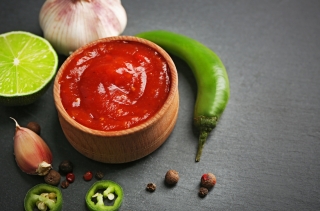
Heat and Hot are Not Synonymous
01 May 2023Playing with spices and capsaicin to achieve hot flavor beyond oven temperature.
By Lisa Parrish, GMC Editor
Feedback & comments: This email address is being protected from spambots. You need JavaScript enabled to view it.
 The nuances between heat achieved through spices and the hot brought on by peppers may be challenging to explain to young chefs. But this interesting conversation should occur given the skyrocketing consumer demands for hotter heat both on menus and in sauces. Are diners craving burning heat or flavorful heat? There is a difference! Let’s dive into the fire and find out.
The nuances between heat achieved through spices and the hot brought on by peppers may be challenging to explain to young chefs. But this interesting conversation should occur given the skyrocketing consumer demands for hotter heat both on menus and in sauces. Are diners craving burning heat or flavorful heat? There is a difference! Let’s dive into the fire and find out.
Fiery demand burns up the category
Consumers requesting hot-and-spicy food is not newsworthy. One must go all the way back to 2009 to find a time when less than half (46 percent to be precise) of consumers wanted hot or spicy food. Today, more than 90 percent of consumers prefer some level of heat, according to Brendan M. Foley, president and chief operating officer of McCormick, as reported by Food Business News.
“Gen Z and millennials are kicking up the demand for heat,” he said. “They are more experimental and prefer authentic, bold and spicy flavors, more so than the generations before them. Their love with heat has driven growth in inherently hot foods like hot sauce as well as in foods with hot and spicy profiles like salty snacks.”
Why the scorching hot demand for heat now? Researchers from the Spicy Exchange gathered insights from market research reports and Google Trends to speculate, “COVID and globalization each contributed to the growing popularity of spicy foods. Over the last few years, people have become increasingly open to trying new and different foods as spicy foods became popular on social media and food blogs.” The group stated that 2022’s data shows the momentum is as strong as ever. 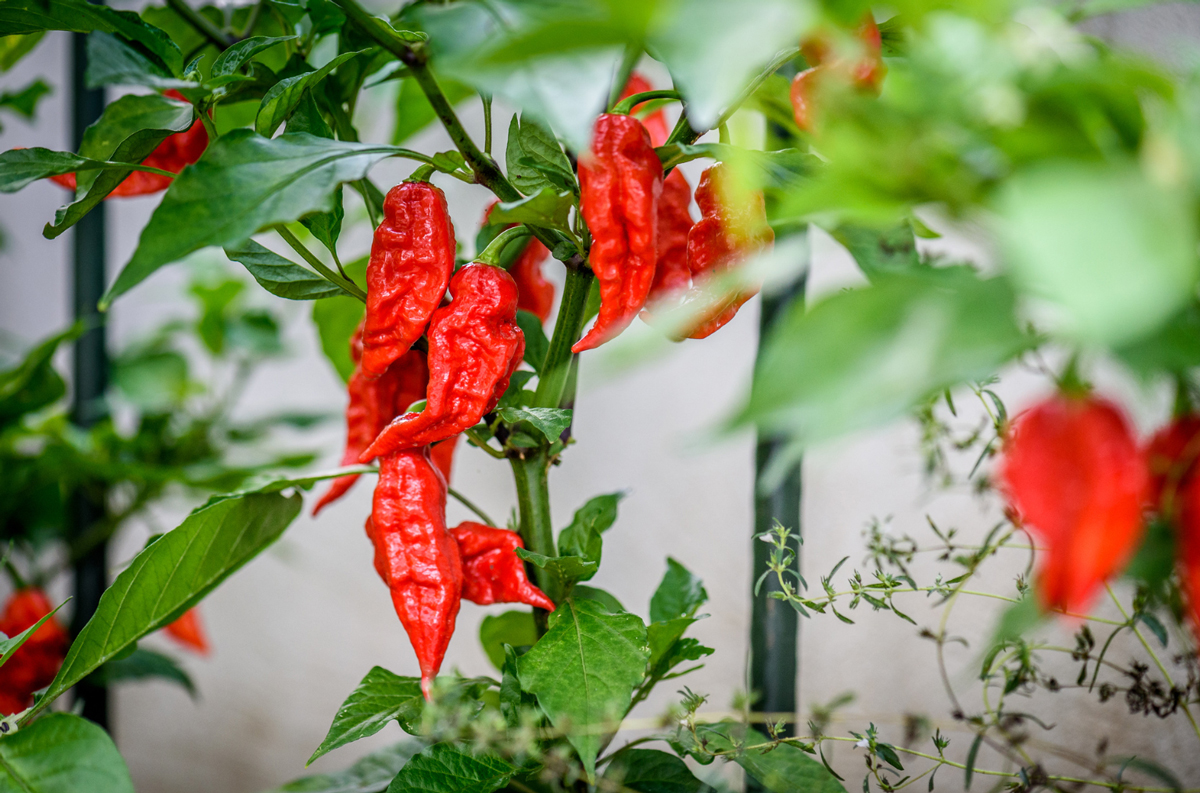
Burning hot tongue tricks
When chefs describe food as hot, are they talking about the temperature of the food or the burning heat someone feels when eating a ghost pepper? As it turns out the answer is yes, from the body’s perspective.
The mouth’s nerve endings determine if a food’s temperature is hot and tells the brain to be careful. The spicy chemicals in a pepper are called capsaicin and when consumed trick the mouth’s nerves into thinking the food is actually temperature hot. That sends the same take-caution signal to the brain, even though the food’s temperature may not be elevated at all. When the brain receives the “too-hot” signal, it begins its cool-down process including sweating.
How hot is too hot? The answer is different for every person who consumes anything with a burn because heat is experienced differently by different people. However, there is an organoleptic test that determines a pepper’s pungency (spiciness or heat), objectively leveling the hot pepper playing field.
 Pharmacist Wilbur Scoville created a scale in 1912 to determine how much water it would take to dilute the taste of a pepper until it no longer tasted hot. The scale ranges from 0 (no heat at all) to 16 million Scoville units. As a reference point, the jalapeno scores between 3,500 and 8,000 units on the scale while the world’s hottest pepper, the Carolina Reaper, clocks in at 400,000 to 2.2 million units. The scale is still in use today, although it has been tweaked to remove human error.
Pharmacist Wilbur Scoville created a scale in 1912 to determine how much water it would take to dilute the taste of a pepper until it no longer tasted hot. The scale ranges from 0 (no heat at all) to 16 million Scoville units. As a reference point, the jalapeno scores between 3,500 and 8,000 units on the scale while the world’s hottest pepper, the Carolina Reaper, clocks in at 400,000 to 2.2 million units. The scale is still in use today, although it has been tweaked to remove human error.
Spices are not necessarily spicy, although spicy can be achieved with spice
Capsaicin chemical compounds (those that the body perceives as hot) are found not only in peppers but also in trace amounts in spices such as black pepper, cumin, nutmeg and cinnamon. These flavors can also be found in garam masala and all are characteristically warming spices but not spicy.
Additionally, there are other chemical compounds the body thinks are warm, such as sinigrin found in mustard, horseradish and cabbage, but none reach capsaicin’s fiery scale. Of course, some spices are derived from peppers, such as cayenne pepper which sits at about 50,000 Scoville units and is clearly a hot spice.
Spice flavors are more nuanced in their degree of burn and therefore can be combined for a flavorful heat or fiery hot dining experience.
Achieving flavorful heat and spice
Now that the science of the burn is behind us, let’s talk about creating flavorful and hot applications. McCormick for Chefs has been researching the hot-and-spicy trend for several years and the subtle differences in heat and spicy have been highlighted in the last three editions of their globally researched Flavor Forecast.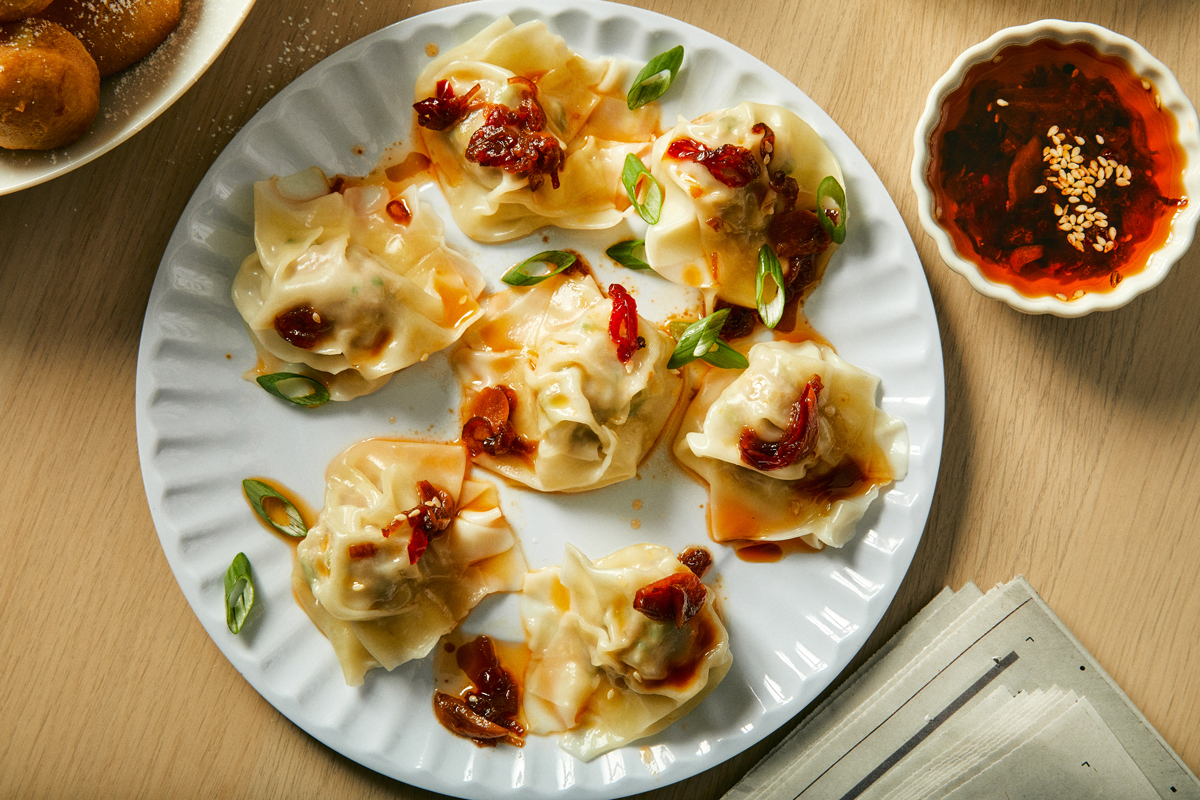
Also, according to another proprietary global consumer study, it was discovered that heat is a key driver, influencing seasoning trends for retail food products globally. “There’s an interesting nuance between spicy, which speaks to flavor alone, and heat, which is more inclusive of sensorial responses and experiences,” the study reported.
Beyond Heat is a specific trend featured in the McCormick Flavor Forecast 23rd Edition. It is a multi-sensorial, layered taste experience where heat and ingredient pairings come together to shape how heat is perceived, where in the face it is felt, and how long it lingers and finishes. The report focuses on how applications need to be a balance of heat and flavor and how it is an overall sensory experience that increases flavor and enjoyment.
Two examples provided by McCormick for Chefs of such multi-textural, oil-based condiments that are quickly becoming go-to heat enablers, are chili crisp and salsa macha. According to the global consumer study, culture and cuisines are inherently intertwined, and heat serves as an expression of cultural identity, especially in heat-intrinsic markets such as China and Mexico.
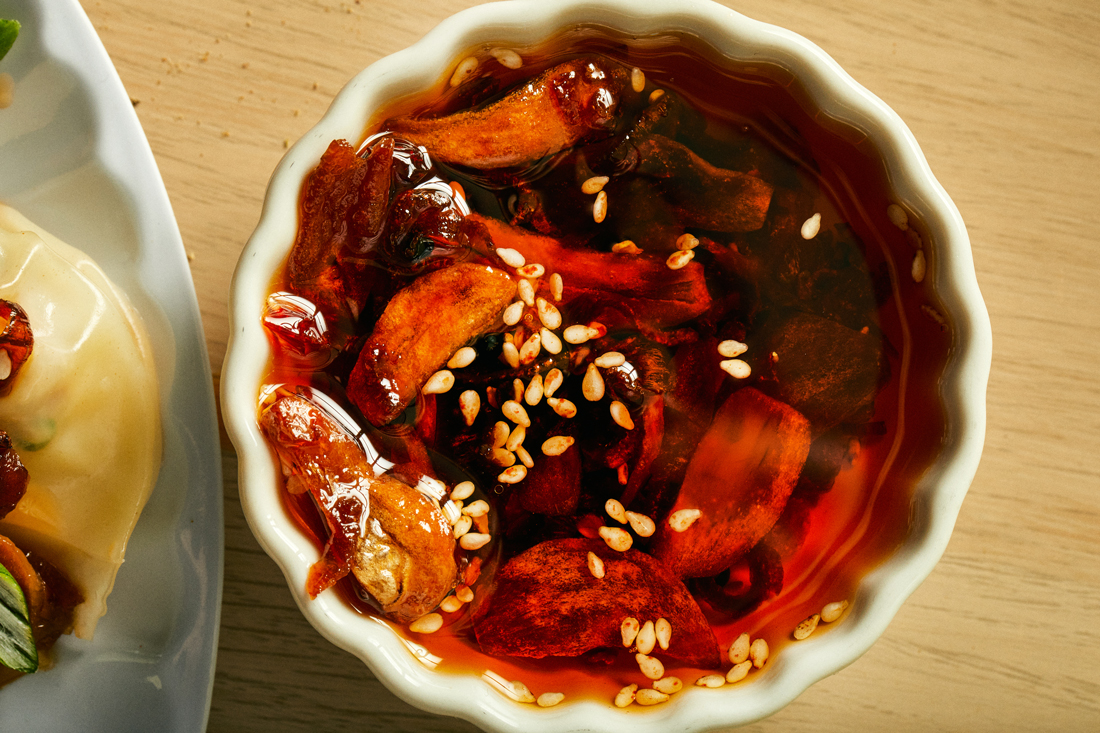 The chili crisp is a spicy infused oil containing crunchy, flavorful bits of peppers, and other aromatics. The crisp originated in China and several consumer brands were recently highlighted in Bon appétit. McCormick’s Flavor Forecast 21st Edition featured a homemade chili crisp and drowned chili crisp dumplings. Gold Medal Classroom recently published a story on the up-and-coming condiment, Mr. Bing Chili Crisp.
The chili crisp is a spicy infused oil containing crunchy, flavorful bits of peppers, and other aromatics. The crisp originated in China and several consumer brands were recently highlighted in Bon appétit. McCormick’s Flavor Forecast 21st Edition featured a homemade chili crisp and drowned chili crisp dumplings. Gold Medal Classroom recently published a story on the up-and-coming condiment, Mr. Bing Chili Crisp.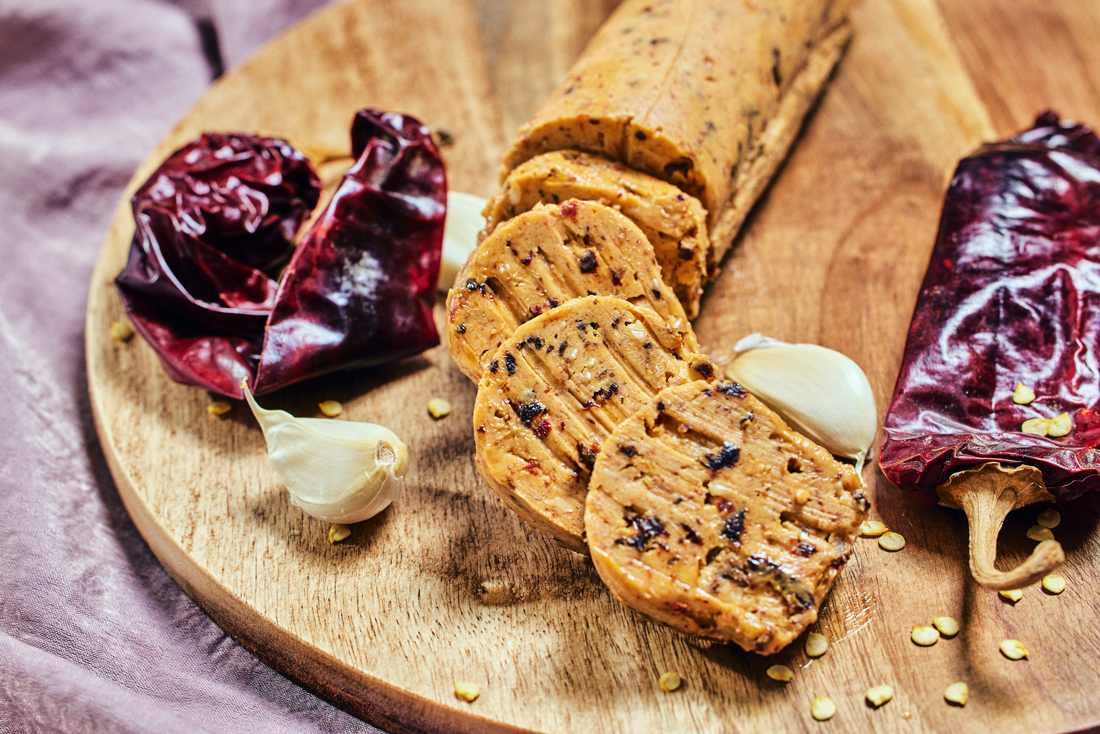
Salsa macha originated in Veracruz, Mexico, and is an oil-based condiment made with seeds and/or nuts, chilies and garlic. The salsa is used more like a topping for quesadillas or tacos rather than a traditional salsa. It can also be made into a salsa macha butter.
A dry seasoning used as a rub or mixed with oil to create a slurry for dipping, dunking or brushing on chicken is another way to create a multi-textural dining experience. See the Gold Medal Classroom story on McCormick for Chef’s newly launched Nashville hot seasoning.
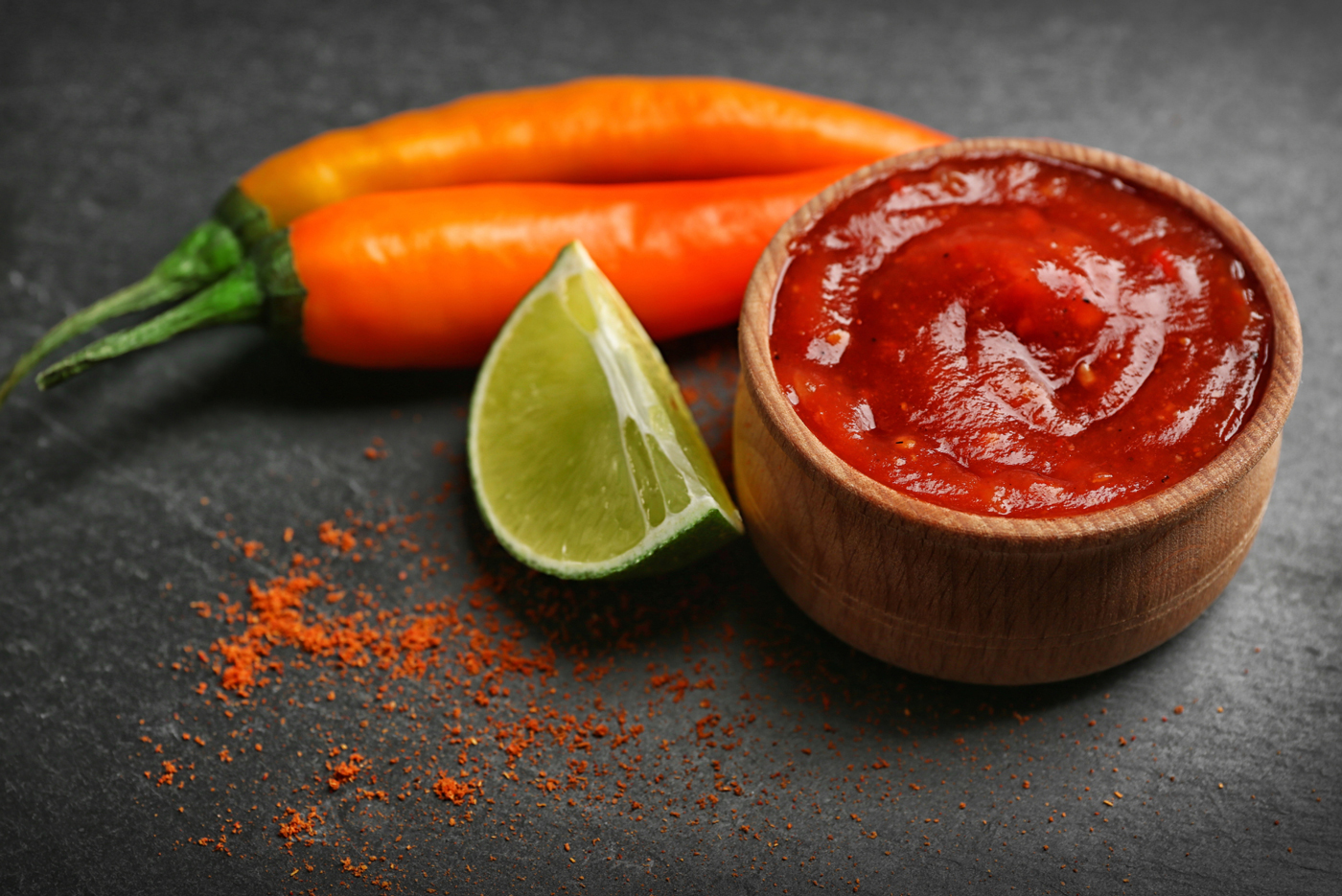 Finally, one of the most popular means for adding heat and flavor to applications is using hot sauce as a finishing sauce. Hot sauce is predicted by McCormick and Chefs to become the next ketchup with its fewer calories than other condiments and no added sugar or artificial flavors. In fact, Fortune Business Insights suggests the global hot sauce market is projected to grow from $2.89 billion in 2022 to $4.72 billion by 2029.
Finally, one of the most popular means for adding heat and flavor to applications is using hot sauce as a finishing sauce. Hot sauce is predicted by McCormick and Chefs to become the next ketchup with its fewer calories than other condiments and no added sugar or artificial flavors. In fact, Fortune Business Insights suggests the global hot sauce market is projected to grow from $2.89 billion in 2022 to $4.72 billion by 2029.
Photos courtesy of McCormick’s for Chefs and Wilbur Scoville, College Yearbook - Henrietta Benedictis Health Sciences Library, Massachusetts College of Pharmacy and Health Sciences.
